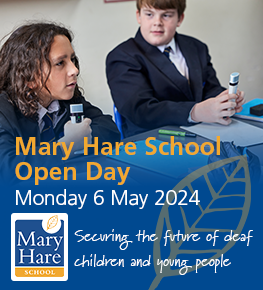3.9. Bone conduction implant assessment
Introduction
With some children, the cochlea works well sending a signal to the brain, but these signals are blocked or hindered by issues with the outer ear, eg microtia and/or atresia, or in the middle ear, eg otosclerosis. Just as with sensorineural deafness, conductive deafness can be bilateral or single-sided.
The use of bone conduction hearing aids, which can be on a headband or behind the ear (BTE) can provide access to sound; however, some children will benefit from having more permanently fixed aids.
There are two main types of fixed bone conduction aids: abutment/magnet, which is fixed to the mastoid bone over two surgeries; or implant, which is fixed to the mastoid bone in one surgery. For more information on these refer to Section 6.
Criteria for permanent fitting:
Children can be referred for a permanent bone conduction aid from five years of age. This option tends to be offered if there are issues with the outer ear that prevents a hearing aid from being used, or if non-surgical aids do not provide suitable access.
As part of the assessment, the child will have their hearing thresholds clarified. The audiogram must depict an air-bone gap greater than 30 dB (PTA4). This can be established through typical assessments such as VRA or PTA
In addition, as much information will be collected on the aetiological cause of hearing levels, history of hearing aid use, and parental views. The options of the manufacturer and hearing aid type will be discussed with the family.
Surgery procedure:
The adult with ‘parental responsibility’ will bring the child to the hospital. If an adult without parental responsibility brings the child in, the operation will be cancelled. It is also important to bring in any medicine the child is currently taking.
The anaesthetist will meet with the family before administering the general anaesthetic. The surgery will take around one to two hours for each implant. The surgeon will mark the location of the magnet/implant behind the ear. Then an incision is made, and titanium fixtures are attached to the mastoid bone.
If the child is receiving an abutment/magnet variation, then at this stage, the surgeon closes the incision using dissolvable stitches. Antibiotics are given to reduce the impact of infection and the child is taken to the recovery ward where they generally will spend one night. After three to four months, once the fixture has fully secured to the mastoid bone, further surgery is carried out to connect the abutment (which can be seen) or the magnet (which sits under the skin). The stitches are not dissolvable at this stage. Further appointments are made over the next six weeks to remove the stitches and to check how the scar is healing. At the final appointment two weeks later, the hearing aid is fitted.
If the child is receiving the implant variation, then at this stage the surgeon will attach the titanium fixture and the implant at the same time. Then, approximately four weeks later, the follow-up appointment will fit the sound processor.
Post-operative care:
Once the sound processor/s has been fitted, the child should be able to recognise the benefit of accessing speech sounds clearly. They will continue to receive support from their local QToD as well as the audiologist.
The child may experience some side effects such as pain from the operation site. This is common and pain relief should ease this.
If, however, the site becomes red, swollen, or inflamed; if there is any oozing or bleeding, or if the pain continues even with pain relief, it is important to contact the GP or audiologist as soon as possible.
Considerations for QToDs:
- The assessments will involve visits to the relevant implant centre, which may not be their regular audiology setting. Support and reassure families of the reasoning and purpose for these.
- Families will have questions after each appointment; having a good knowledge of all types and manufacturers of bone conduction implants and speech processors will be beneficial.
- Support families in understanding the importance of wearing hearing aids, especially during the assessment period.
- Surgery can be scary for any family. Reassure families regarding each stage of the process so that they understand what will happen.
- It is important to keep the surgery site clean, according to the instructions given by the surgeon or ENT team especially if receiving abutment variation.
- Know the signs and symptoms of potential issues post-surgery and support the families to recognise these.
Further reading:
For further information refer to:
Osia Hearing solution | Cochlear Professionals
BONEBRIDGE Bone Conduction Implant (medel.com)
Bone_anchored_hearing_aids_F0433_A4_bw_FINAL_Nov15.pdf (gosh.nhs.uk)
C0207-How-Baha-works-factsheet.pdf (southampton.ac.uk)
Next Section 4 Acoustics and physics of sound
Previous pages in section 3
3.1 Newborn hearing screening programme (NHSP)
3.3 Visual reinforcement audiometry
3.5 Assessing children with additional needs
3.6 Auditory neuropathy spectrum disorder (ANSD)
3.7 Auditory processing disorder (APD)
3.8 Cochlear implant assessment
Other sections
- Section 1 Anatomy and physiology of the ear
- Section 2 Aetiology and types of deafness
- Section 5 Listening skills and functional hearing
- Section 6 Hearing technologies




